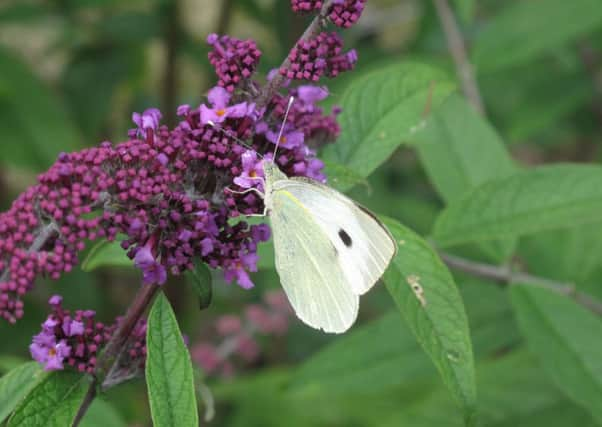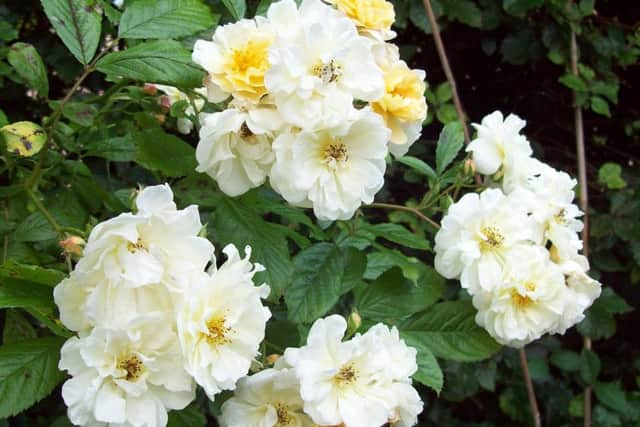GARDENING: '˜Perfect storm' makes a bad year for butterflies


On the other hand, there are loads of moths – apparently diamondbacks – which have appeared in 100 times the normal numbers from continental Europe in June.
They are resistant to many insecticides and feed on brassicas and oil seed rape. Their offspring should be appearing about now, so net your cabbages.


Advertisement
Hide AdAdvertisement
Hide AdAnother migrant to look out for is the silver Y moth, spotted in its thousands in the Euro 2016 final (one landed on Cristiano Ronaldo’s face). They will be blown into Britain by southerly winds.
Sir David Attenborough is urging people to take part in the Big Butterfly Count, a nationwide survey which ends tomorrow.
It’s the world’s biggest survey of butterflies, with more than 52,000 people taking part in 2015, counting over 580,000 individual butterflies and day-flying moths across the UK.
Many common species, particularly the small and large whites, the common blue and the small copper are scarce this year. There’s also been a dip in the number of meadow browns, which was third in 2015.


Advertisement
Hide AdAdvertisement
Hide AdExperts fear that mild winters are harming populations – caterpillars which usually hibernate were seen emerging last December and were then killed off by cold weather or starvation.
All you have to do is count butterflies for 15 minutes during bright (preferably sunny) weather.
There’s an identification chart to download to help you work out which butterflies you have seen.
You can submit separate records for different dates at the same place, and for different places that you visit – and the count is useful even if you don’t see any butterflies or moths.
Advertisement
Hide AdAdvertisement
Hide AdSend in your sightings online at www.bigbutterflycount.org or by using the free big butterfly count smartphone apps available for iOS and Android.
JOBS FOR THE WEEKEND
Rambling roses can be pruned now, once they have finished flowering.
Cutting back the foliage and stems of herbaceous plants that have already died back (e.g. Dicentra) is starting to be a priority.
Prune climbing and rambling roses that do not repeat flower or produce attractive hips, once the flowers have finished.
Advertisement
Hide AdAdvertisement
Hide AdTake cuttings of tender perennials such as Pelargonium and Osteospermum, as soon as possible. A greenhouse, cool conservatory or a light windowsill are ideal to bring them on until they are established.
Feed containers, and even tired border perennials, with a liquid tomato food to encourage them to bloom into the early autumn.
Collect and store seed of hardy annuals and perennials for sowing later in the autumn. Good plants to try include Calendula, Nigella, Cerinthe,Papaver, Aquilegia and hardy Geranium.
Thoroughly soak drought-stressed plants and shrubs, especially newly planted ones. Use grey, recycled or stored rain water wherever possible.
Advertisement
Hide AdAdvertisement
Hide AdKeep early-flowering shrubs such as Camellia and Rhododendron well watered during dry periods to ensure good flower bud initiation.
Top up water where necessary in ponds and water features. Aerate the water in hot sticky weather by leaving fountains on overnight.
Continue to remove blanket weed and duckweed using a net or rake.
Limit the fruits on a squash plant to about three, but make sure these fruits are established before pinching out the surplus.
Advertisement
Hide AdAdvertisement
Hide AdSpring-sown carrots and beetroot will be ready to harvest now although they can be left in the ground to keep growing.
Continue to harvest second early potatoes now – perfect for salads.
Lift and dry onions, shallots and garlic once the foliage has flopped over and yellowed. Store them in onion bags to prevent moulds developing.
Harvest french and runner beans little and often to prevent them from setting seed.
Advertisement
Hide AdAdvertisement
Hide AdPick runner beans regularly to prevent them becoming stringy and to make room for developing pods. Leaving mature pods to set seed can prevent further flowers developing and reduce your crop.
CONTACT
For more on these topics, plus cook what you grow, traditional recipes, North East information, environmental news and more, log on to www.mandycanudigit.co.uk (now smartphone friendly), www.sunderlandecho.com/gardening, follow me on Twitter @MandyCanUDigIt or you can like me on Facebook at Mandycanudigit